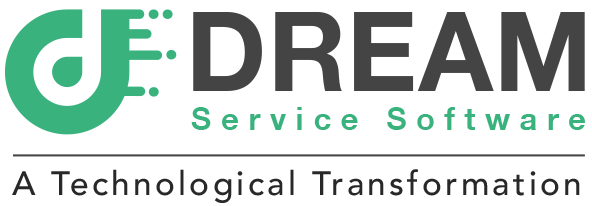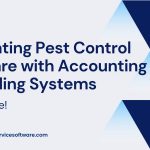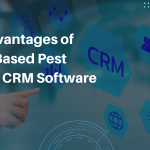In the world of pest control, efficiency and accuracy are paramount. Pest control companies deal with a wide range of tasks, from scheduling appointments and managing technicians to billing clients and keeping track of expenses. To streamline these operations and enhance overall productivity, integrating pest control software with accounting and billing systems has become increasingly important. In this blog post, we will explore the benefits and strategies of integrating Pest Control Management Software with accounting and billing systems, and how it can help pest control companies thrive in today's competitive market.
The Role of Pest Control Management Software
Pest Control Management Software is designed to simplify the day-to-day operations of pest control companies. It offers a comprehensive set of tools to manage customer data, track appointments, monitor technician schedules, and even optimize routing for service calls. In essence, it acts as a Pest Control CRM Software, helping businesses efficiently manage customer relationships, streamline processes, and ultimately provide better service.
However, while Pest Control Management Software excels at handling operational tasks, it may not cover the financial aspects of running a pest control business adequately. This is where the integration with accounting and billing systems comes into play.
Benefits of Integration
Streamlined Operations-
Integrating pest control software with accounting and billing systems eliminates the need for manual data entry and duplicate record-keeping. Information flows seamlessly from one system to another, reducing the risk of errors and saving valuable time. This streamlining of operations allows employees to focus on more critical tasks, such as customer service and pest control.
Accurate Invoicing-
Accurate invoicing is crucial for any business. With integrated systems, invoices can be generated automatically based on completed service orders or appointments. This ensures that customers are billed accurately and promptly, reducing disputes and improving cash flow.
Enhanced Compliance and Reporting with Pest Control CRM Software for Accounting-
Integrated systems can help pest control companies meet regulatory requirements more efficiently. By seamlessly tracking and reporting on pest control activities, expenditures, and financial data through Pest Control CRM Software for Accounting, businesses can demonstrate compliance with industry standards and regulations. This can be especially crucial when dealing with government agencies or certifications.
Financial Reporting-
One of the significant advantages of integrating pest control software with accounting systems is the ability to generate comprehensive financial reports. Business owners can gain insights into their company's financial health, monitor profitability, and make data-driven decisions to optimize operations.
Improved Cash Flow Management with Pest Control CRM Software for Accounting-
Effective integration through Pest Control CRM Software for Accounting allows for better cash flow management. Companies can gain real-time visibility into their financial transactions, outstanding invoices, and receivables. This enables them to follow up on overdue payments promptly and make informed decisions about cash reserves and investments, all within a streamlined and integrated environment.
Enhanced Compliance and Reporting-
Integrated systems can help pest control companies meet regulatory requirements more efficiently. By seamlessly tracking and reporting on pest control activities and expenditures, businesses can demonstrate compliance with industry standards and regulations. This can be especially crucial when dealing with government agencies or certifications.
Improved Cash Flow Management-
Effective integration allows for better cash flow management. Companies can gain real-time visibility into their financial transactions, outstanding invoices, and receivables. This enables them to follow up on overdue payments promptly and make informed decisions about cash reserves and investments.
Scalability and Growth-
As pest control businesses expand, their data management needs grow as well. Integrated systems can adapt to increased workloads and data volumes, allowing companies to scale without significant disruptions. Whether adding more technicians or servicing new locations, integrated software systems can accommodate growth seamlessly.
Efficient Technician Payroll Management-
Integrating pest control software with accounting systems simplifies the process of managing technician payroll. You can automatically calculate technician commissions, bonuses, and overtime based on the data from the pest control software. This not only reduces administrative work but also ensures accurate and timely payments, which can boost employee morale and retention.
Seamless Tax Preparation-
Tax season can be stressful for businesses, but integration can ease the burden. When your pest control software is connected to your accounting system, you can easily extract financial data and generate reports necessary for tax filings. This reduces the risk of errors and simplifies the tax preparation process, potentially saving you time and money in the long run.
Data Security and Backup-
Data security is a top concern for businesses in the digital age. Integrated systems often provide better data security and backup options. By centralizing your data and using reputable accounting and billing systems, you can benefit from their advanced security features and regular data backups, reducing the risk of data loss or breaches.
Strategies for Integration-
Now that we understand the benefits of integrating Pest Control Management Software with accounting and billing systems, let's explore some strategies to implement this integration effectively:
Choose Compatible Software-
Start by selecting pest control software that is compatible with popular accounting and billing systems such as QuickBooks, Xero, or FreshBooks. Compatibility ensures a smoother integration process and reduces the need for custom development.
Plan Integration Workflow-
Map out the workflow for data transfer between the pest control software and accounting/billing systems. Define which data points will be synchronized, such as customer information, service orders, invoices, and expenses.
Data Validation and Mapping-
Ensure that data is accurately mapped between systems. Inconsistencies in data format or naming conventions can lead to errors in the integration. Implement data validation checks to maintain data integrity.
Testing-
Thoroughly test the integration before deploying it in a production environment. This includes testing data synchronization, invoice generation, and financial reporting. Identify and resolve any issues before going live.
Training-
Train your employees on how to use the integrated system effectively. Make sure they understand how data flows between the pest control software and accounting/billing systems and how to troubleshoot common issues.
Conclusion
Integrating Pest Control Management Software with accounting and billing systems offers numerous benefits to pest control companies, ranging from streamlined operations and accurate invoicing to better expense tracking and financial reporting. By automating and centralizing these processes, businesses can improve efficiency, reduce errors, and ultimately provide a higher level of service to their customers.
If you're in the pest control industry, consider the advantages of integrating your software systems to stay competitive and thrive in the ever-evolving market. With the right strategies and compatible software, you can transform your pest control business into a well-oiled machine that delivers exceptional results for both you and your customers.


 Integrating Pest Control Software with Accounting and Billing Systems
Integrating Pest Control Software with Accounting and Billing Systems How Can Pest Control CRM Software Help in Enhancing Customer Service and Retention
How Can Pest Control CRM Software Help in Enhancing Customer Service and Retention How Pest Control CRM Software Is Boosting Customer Satisfaction
How Pest Control CRM Software Is Boosting Customer Satisfaction The Advantages of Cloud-Based Pest Control CRM Software
The Advantages of Cloud-Based Pest Control CRM Software 5 Reasons Why Pest Control Companies Should Switch to CRM Software
5 Reasons Why Pest Control Companies Should Switch to CRM Software